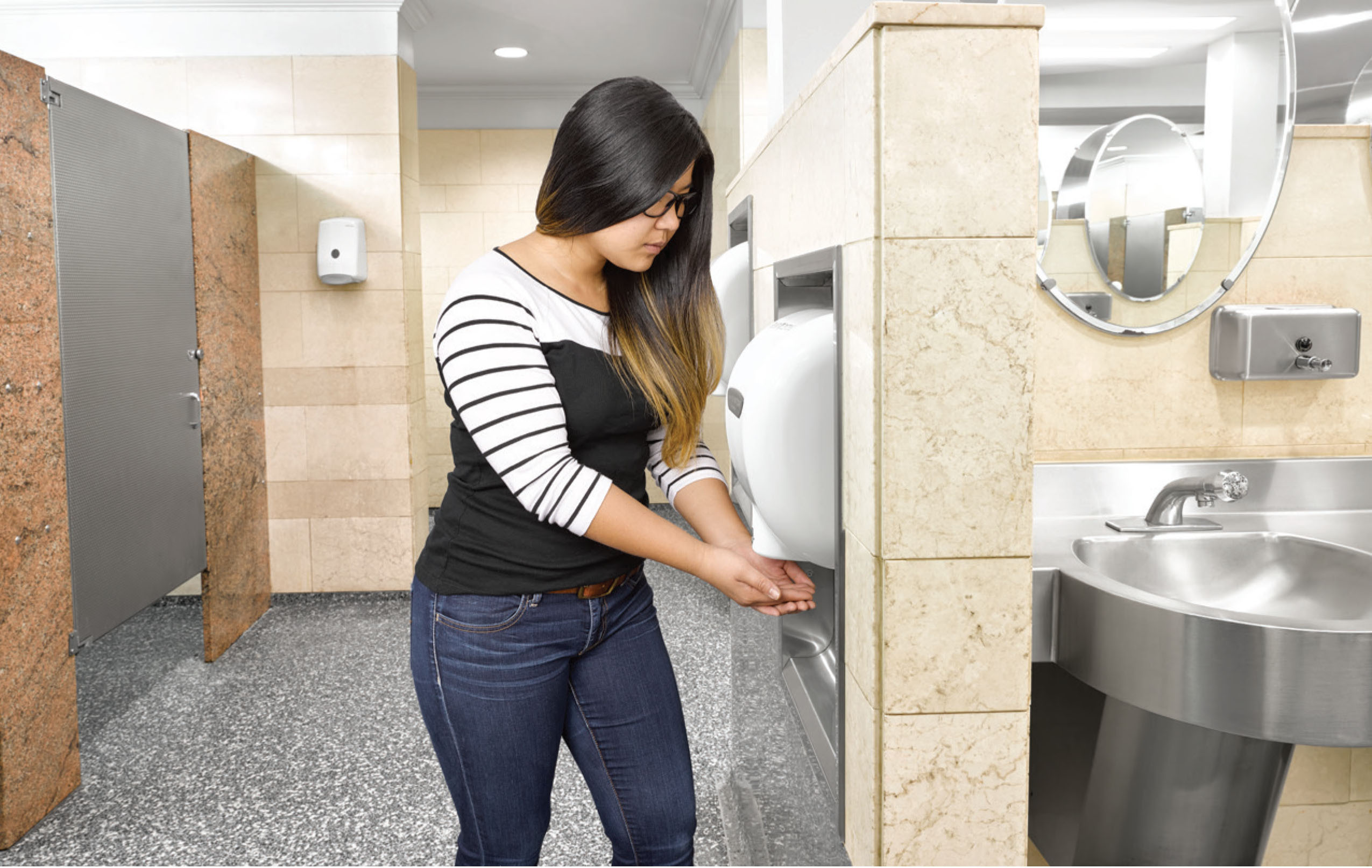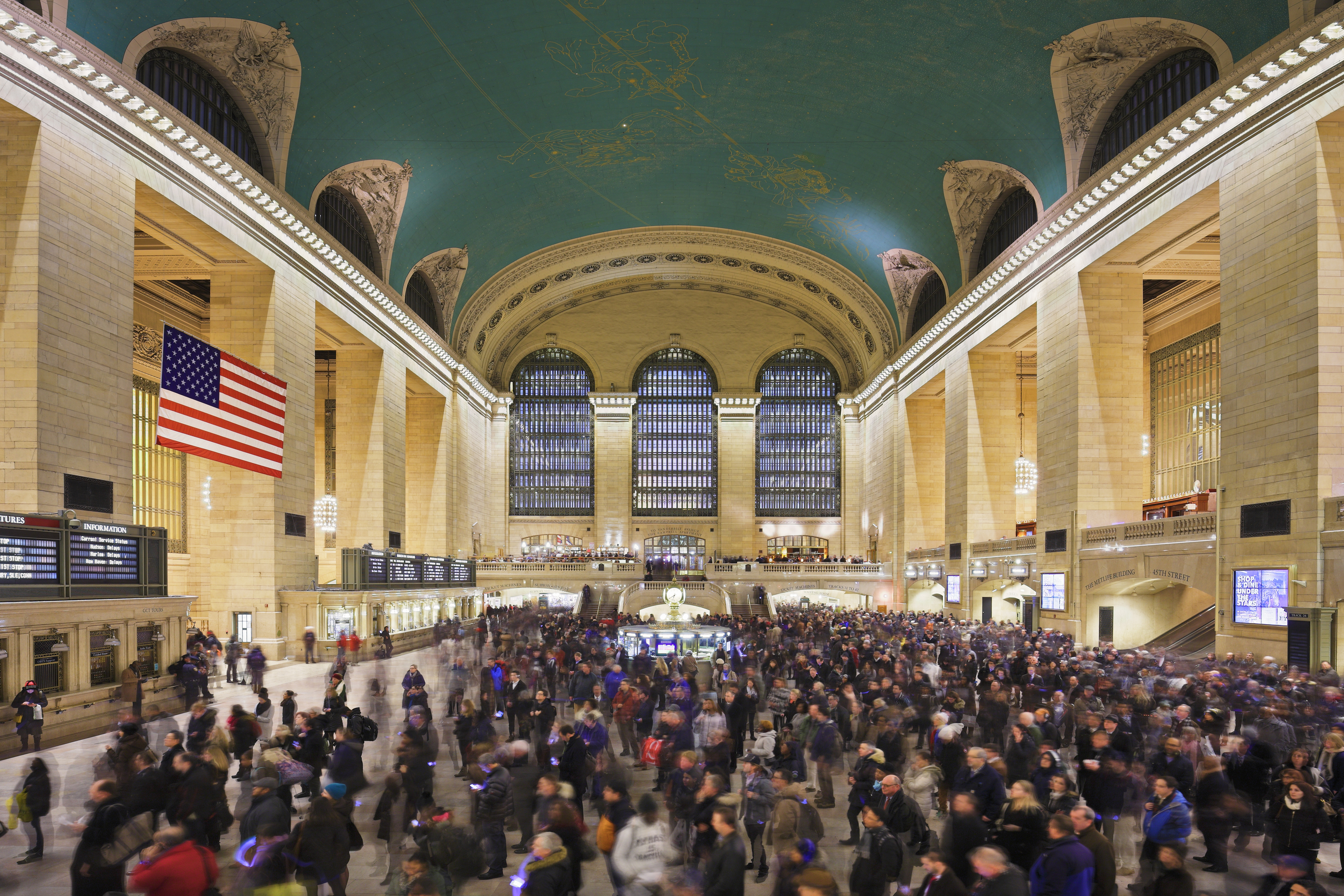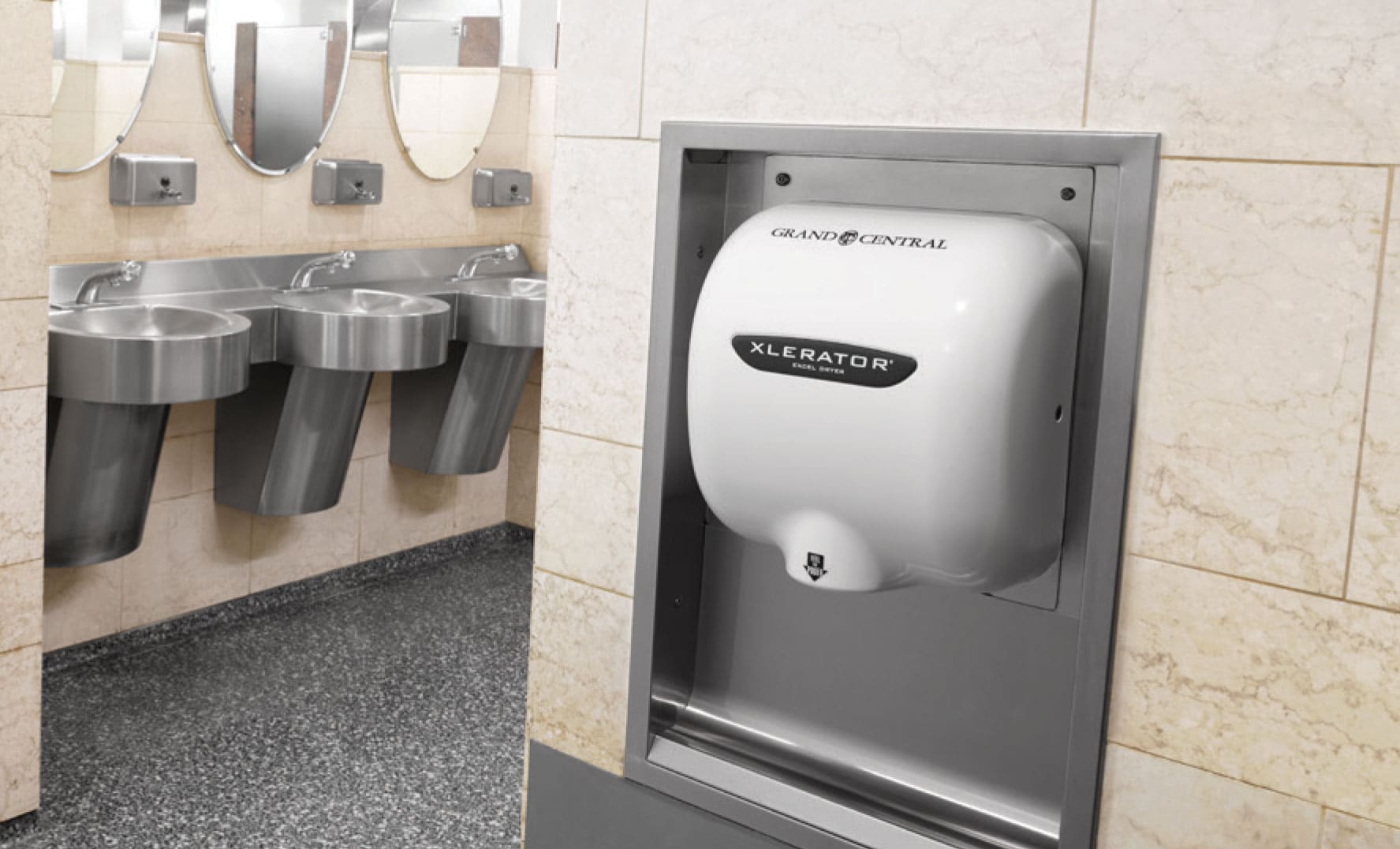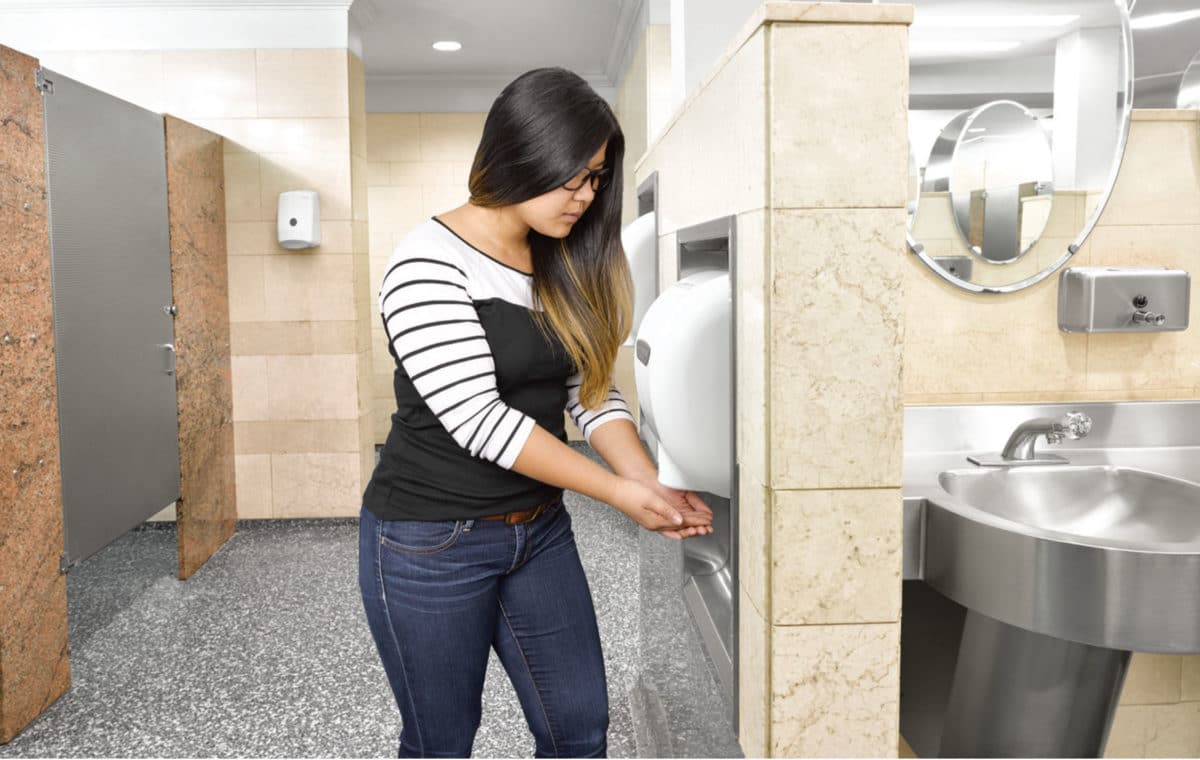
[Photo: Courtesy of Excel Dryer]
To learn more, visit Excel Dryer.
Not every one of the 750,000 people who daily pass through New York City’s Grand Central Terminal is there to take a train. About a third are just visitors, and 10,000 people are there to eat. Since it opened in 1871, it’s been one of the busiest places on earth. GCT is where hordes of people are on the move and wasting no time.
It’s also a place to use a restroom. Steve Stroh, assistant deputy director of mechanical and electrical operations at GCT, takes particular pride in the bathrooms serving all those people. “The restrooms in Grand Central Terminal are the best in New York City,” he says.
But from his perspective, those bathrooms didn’t always function to perfection. Paper towels, commonly thought to be a fast way to dry hands and perhaps environmentally friendly, were more a source of problems than good customer service.
“They get thrown on the floor, or they get thrown in the toilets,” says Stroh. “People put them on the toilet seats—you know, we have seat covers—but they put them in the toilets. It all gets flushed, the toilets get plugged, and they overflow and then we have to clean it up.”

[Photo: iStock]
That problem has recently been eliminated with a simple fix: installation of high-speed, energy-efficient hand dryers. After experimenting with different brands, the landmark transportation hub installed two-dozen energy-efficient XLERATOR® Hand Dryers from Excel Dryer Inc. in East Longmeadow, Massachusetts. Instead of needing a continuous supply of paper towels in dispensers, then emptying trash cans and cleaning up spent towels that don’t make it into the trash, Stroh’s maintenance staff can now tend to other tasks in the 48-acre transportation hub.
The decision to go paperless, however, took some trial and error. Another high-velocity hand dryer manufacturer’s product of a different design was tested that didn’t look likely to work in this high-traffic environment. “We installed the other brand in our employee spaces,” Stroh says, detailing how the electrical system could easily malfunction. “We’d have to actually go reset it because it didn’t automatically reset. The difference with the XLERATOR is we don’t have to go do anything to it.”

[Photo: Courtesy of Excel Dryer]
With 82 million visitors per year, it might seem like the ultimate crush of use for a hand dryer of any kind. But XLERATORs are increasingly seen in places where lots of people need to dry their hands in a hurry: John F. Kennedy International Airport, Dallas/Fort Worth International Airport, Heathrow Airport, Fenway Park, and Brooklyn Bowl, to name a few.
Another customer that installed XLERATOR dryers is the Washington, DC headquarters of the USGBC. It’s part of how the certifying organization itself achieved a LEED Platinum credential for Existing Buildings: Operations & Maintenance (the retrofitted building has other tenants and is owned by a third party).
This provides emphasis to a surprising characteristic of XLERATOR: It’s not just green; it’s greener than paper towels. The USGBC has what it calls its Learning Pathway, a corridor that showcases carbon-reducing products used in the building, including the XLERATOR. A full life cycle assessment of the high-velocity dryers found that materials production, manufacturing, transportation, use, and end of life for the XLERATOR have a carbon footprint less than a quarter of paper towels, 100% recycled paper towels, and conventional hand dryers. Cost-per-use metrics are even more dramatic: Over 1,000 uses, the XLERATOR cost is $0.50 versus $23 for virgin and recycled towels.

[Photo: Shutterstock]
William Gagnon, vice president of marketing and sales for Excel Dryer, provides additional reasons why global crossroads such as Grand Central, airports, ballfields, and even legions of restaurants readily adopt. “These dryers are made to continuously cycle for reliable operation,” he says, noting that dependability and reliability are essential features to high-volume transportation and entertainment venues. “There’s a reason why so many high-traffic facilities have turned to Excel Dryer,” he furthered. “We make a product that people can depend on, for facilities of all sizes and traffic flow.”
Even in high traffic with little reprieve, the dryers keep functioning by design. An externally visible service LED streamlines maintenance when necessary, says Stroh. “Honestly, Excel is so good with that if we can’t clean it and make it work, we’ll box it up and we’ll send it back,” he says. “Either Excel fixes it or they’ll send us a new one.”
The product’s voltage options (110V-120V or 208-277V in 50 or 60 hertz) enable it to work in different electrical systems, which have facilitated its distribution in other countries. There seem to be no cultural or language limits, either. “XLERATOR was designed to be very intuitive and user friendly for use all over the world,” Gagnon says. “No matter the country or language, the message is clear: It’s time to throw in the towel.”
Read more about Excel Dryers and see related stories here.

